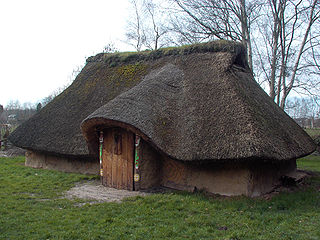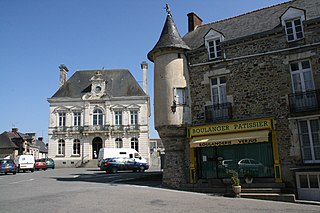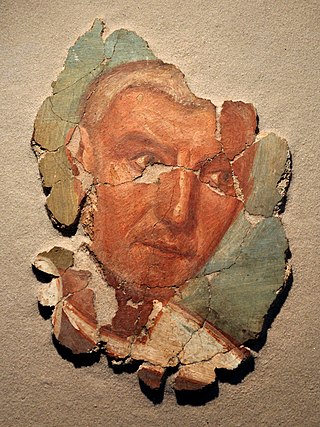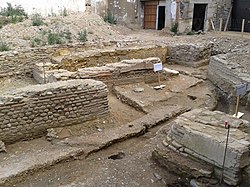
Gaul was a region of Western Europe first clearly described by the Romans, encompassing present-day France, Belgium, Luxembourg, and parts of Switzerland, the Netherlands, Germany, and Northern Italy. It covered an area of 494,000 km2 (191,000 sq mi). According to Julius Caesar, who took control of the region on behalf of the Roman Republic, Gaul was divided into three parts: Gallia Celtica, Belgica, and Aquitania.

Gallia Belgica was a province of the Roman Empire located in the north-eastern part of Roman Gaul, in what is today primarily northern France, Belgium, and Luxembourg, along with parts of the Netherlands and Germany.

The Menapii were a Belgic tribe dwelling near the North Sea, around present-day Cassel, during the Iron Age and the Roman period.

The Lingones were a Gallic tribe of the Iron Age and Roman periods. They dwelled in the region surrounding the present-day city of Langres, between the provinces of Gallia Lugdunensis and Gallia Belgica.

The Remi were a Belgic tribe dwelling in the Aisne, Vesle and Suippe river valleys during the Iron Age and the Roman period. Their territory roughly corresponded the modern Marne and Ardennes and parts of the Aisne and Meuse departments.

The Suessiones were a Belgic tribe, dwelling in the modern Aisne and Oise regions during the La Tène and Roman periods.

Bibracte, a Gallic oppidum, was the capital of the Aedui and one of the most important hillforts in Gaul. It was located near modern Autun in Burgundy, France. The material culture of the Aedui corresponded to the Late Iron Age La Tène culture.

Durocortorum was the name of the city Reims during the Roman era. It was the capital of the Remi tribe and the second largest city in Roman Gaul.

Rennes, France, is the administrative capital of the French department of Ille-et-Vilaine. Before the French Revolution, prior to the integration of the Duchy of Brittany into the Kingdom of France, Rennes was the capital of the duchy, with the other historical capitals of Brittany's Ducal period being Nantes and Vannes. It has a long history due to its location at the confluence of two rivers and its proximity to the bordering regions from which arose various challenges to the borders of Brittany.

Vaison-la-Romaine is a town in the Vaucluse department in the Provence-Alpes-Côte d'Azur region in southeastern France.

The Viromanduī or Veromanduī were a Belgic tribe dwelling in the modern Vermandois region (Picardy) during the Iron Age and Roman periods. During the Gallic Wars, they belonged to the Belgic coalition of 57 BC against Caesar.

Amanlis is a commune in the department of Ille-et-Vilaine in the region of Brittany in western France. The inhabitants of Amanlis are known as Amanlisiens.

Ganagobie is a commune in the Alpes-de-Haute-Provence department in southeastern France.

Janzé is a commune in the Ille-et-Vilaine department in Brittany in northwestern France. It is also the seat of the Canton of Janzé. The inhabitants of Janzé are called Janzéens in French.

The Redones or Riedones were a Gallic tribe dwelling in the eastern part of the Brittany peninsula during the Iron age and subsequent Roman conquest of Gaul. Their capital was at Condate, the site of modern day Rennes.

Gallo-Roman culture was a consequence of the Romanization of Gauls under the rule of the Roman Empire. It was characterized by the Gaulish adoption or adaptation of Roman culture, language, morals and way of life in a uniquely Gaulish context. The well-studied meld of cultures in Gaul gives historians a model against which to compare and contrast parallel developments of Romanization in other less-studied Roman provinces.

Lyon is a city in the southeast of France. The area has been inhabited since prehistoric times and was one of the most important cities of the Roman Empire, Lugdunum. After the Battle of Lugdunum (197) the city never fully recovered, and Lyon was built out of its ashes becoming a part of the Kingdom of the Burgundians.
The Tricastini were a small Gallic tribe dwelling in the modern Tricastin region, near present-day Saint-Paul-Trois-Châteaux, during the Iron Age and the Roman period.
The Helvii were a relatively small Celtic polity west of the Rhône river on the northern border of Gallia Narbonensis. Their territory was roughly equivalent to the Vivarais, in the modern French department of Ardèche. Alba Helviorum was their capital, possibly the Alba Augusta mentioned by Ptolemy, and usually identified with modern-day Alba-la-Romaine. In the 5th century the capital seems to have been moved to Viviers.
The archaeological site of Alba-la-Romaine, corresponding to the Gallo-Roman city of Alba Augusta Helviorum or Alba Helviorum is located near the present town of Alba-la-Romaine. The site is in the French department of Ardèche, Rhône-Alpes. During the Roman Imperial era, Alba was the capital of the Celtic-speaking polity of Helvii, which had territory covering the area of lower Vivarais.



















